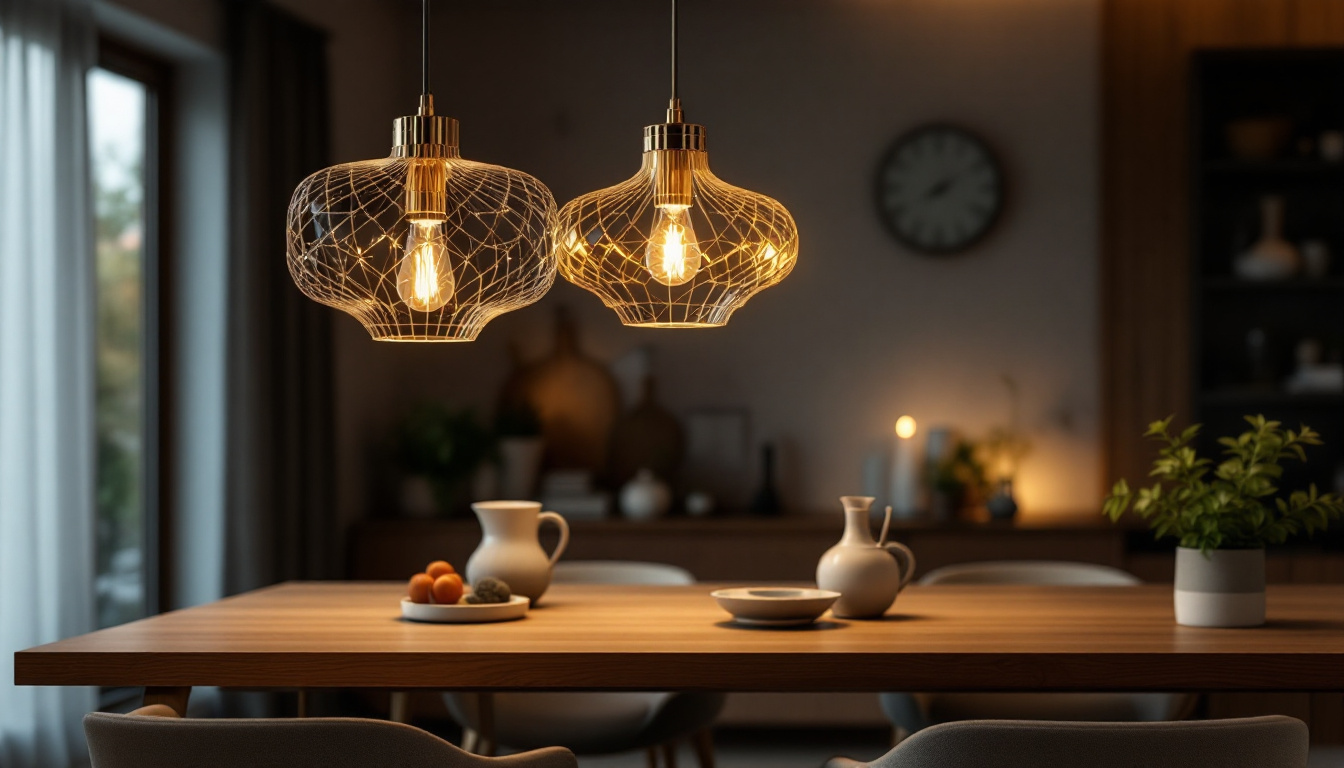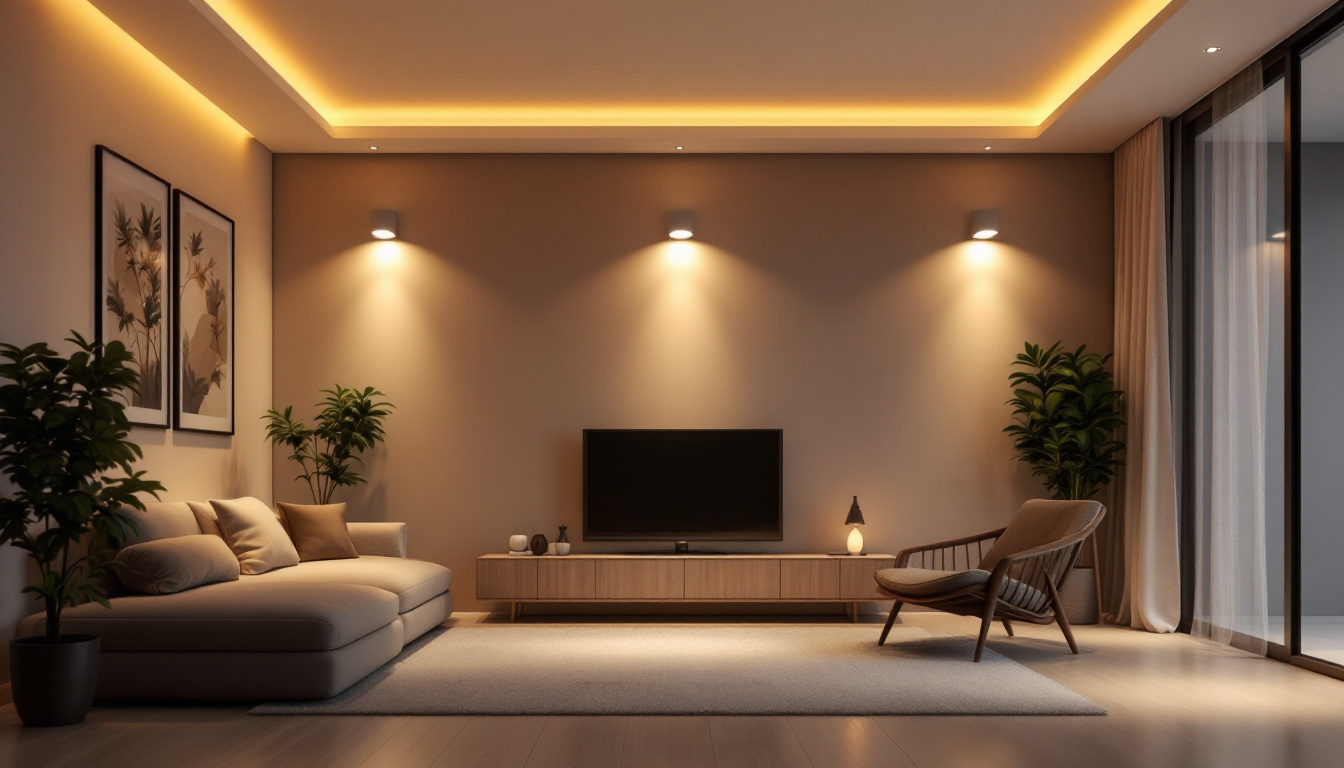
Lighting plays a crucial role in the overall atmosphere of a space. For contractors, understanding how to effectively use hanging lamps can significantly enhance the aesthetic appeal of a project while also ensuring functionality. Proper lighting not only illuminates a space but also influences mood, productivity, and even safety. The right lighting can transform a mundane room into an inviting sanctuary or a bustling workspace into a productive haven, making it essential for contractors to prioritize lighting in their design plans.
When planning a lighting project, it is essential to consider the specific needs of the space and the preferences of the client. This understanding can help avoid common pitfalls that may lead to costly mistakes down the line. From choosing the right type of hanging lamp to ensuring proper installation, every detail matters. Furthermore, staying updated with the latest lighting trends and technologies, such as energy-efficient LED options, can also provide clients with sustainable choices that reduce energy consumption while maintaining style.
There are various types of hanging lamps available, each designed for specific applications and aesthetics. Common options include pendant lights, chandeliers, and flush mounts. Pendant lights are versatile and can be used in kitchens, dining areas, and even living rooms. Chandeliers, on the other hand, often serve as focal points in dining rooms or entryways, adding elegance and sophistication. Moreover, there are also unique variations like multi-light pendants and cluster lights that can create a more dynamic visual interest in a space.
Understanding the characteristics of each type of hanging lamp is essential for making informed decisions. For instance, pendant lights come in various styles, sizes, and materials, allowing for a broad range of design possibilities. It is crucial to select a style that complements the overall design of the space while also fulfilling the lighting requirements. Additionally, considering the finish of the lamp, such as matte, polished, or brushed metal, can further enhance the cohesiveness of the design, ensuring that the lighting not only serves its purpose but also becomes a statement piece within the room.
Before selecting a hanging lamp, a thorough assessment of the space is necessary. Factors such as ceiling height, room dimensions, and existing decor can significantly influence the choice of lighting. For example, in a room with high ceilings, a long pendant light may create a dramatic effect, while in a smaller space, a compact chandelier might be more appropriate. Moreover, the color palette of the room should also be taken into account, as different light sources can affect how colors appear, potentially altering the intended ambiance.
Additionally, consider the purpose of the space. A workspace may require brighter, more focused lighting, while a cozy living area may benefit from softer, ambient light. Taking the time to evaluate these aspects can help ensure that the chosen hanging lamp enhances the functionality and aesthetic of the space. Furthermore, incorporating dimmable options can provide flexibility, allowing the lighting to adapt to different activities and moods throughout the day, whether it’s a lively dinner party or a quiet evening of relaxation. This thoughtful approach to lighting not only enhances the immediate environment but also contributes to the overall experience of the space, making it a vital consideration in any design project.
Even experienced lighting contractors can fall victim to common mistakes when planning lighting projects. Awareness of these pitfalls can help save time, money, and frustration. Here are some of the most frequent errors to avoid:
One of the most significant mistakes in lighting projects is inadequate planning. Failing to create a comprehensive lighting plan can lead to mismatched fixtures, insufficient illumination, or even over-lighting. A well-thought-out plan should include the type, size, and placement of each hanging lamp, as well as the desired ambiance.
Taking the time to sketch out a lighting layout can help visualize how different fixtures will interact within the space. This step is crucial for ensuring that the lighting meets both functional and aesthetic needs. Additionally, consulting with clients during this phase can help align expectations and prevent misunderstandings later in the project.
Another common mistake is neglecting electrical considerations during the planning phase. It is vital to ensure that the existing electrical infrastructure can support the new lighting fixtures. This includes checking the wattage and voltage requirements of the chosen hanging lamps and ensuring that the circuit can handle the load.
Furthermore, proper installation is critical. Hanging lamps should be securely mounted to prevent accidents and ensure longevity. Contractors should be familiar with local building codes and regulations to ensure compliance and safety.
While functionality is essential, aesthetics should not be overlooked. A hanging lamp that does not match the overall design theme of a space can detract from its appeal. It is crucial to consider the style, color, and material of the lamp in relation to the surrounding decor.
For instance, a sleek, modern pendant light may clash with a traditional farmhouse-style kitchen. By carefully selecting fixtures that complement the design elements of the space, contractors can create a cohesive and visually appealing environment.
Selecting the appropriate hanging lamps for a project is a vital step that can significantly impact the outcome. The right fixtures not only enhance the aesthetic appeal but also ensure that the lighting meets the functional requirements of the space.
When choosing hanging lamps, scale is a critical factor. A large chandelier may overwhelm a small room, while tiny pendant lights may get lost in a spacious area. It is essential to find a balance that complements the dimensions of the space. A good rule of thumb is to select fixtures that are proportionate to the room size and ceiling height.
Additionally, consider the scale of the furniture and other design elements in the room. A well-scaled hanging lamp can create a harmonious look, while mismatched sizes can create visual chaos.
In today’s environmentally conscious world, energy efficiency is a significant consideration in lighting projects. Opting for LED hanging lamps can reduce energy consumption and lower utility bills for clients. LED fixtures are available in various styles and can provide the same level of brightness as traditional incandescent bulbs while using a fraction of the energy.
Moreover, incorporating dimmers and smart lighting controls can enhance energy efficiency further. These features allow users to adjust the brightness according to their needs, which can lead to additional energy savings.
Before finalizing the installation of hanging lamps, it is advisable to test the lighting in the space. This step allows contractors to assess how the fixtures interact with the room and make any necessary adjustments. Testing can reveal issues such as inadequate illumination or unflattering shadows that may not have been apparent during the planning phase.
Encouraging clients to be involved in this testing phase can also provide valuable feedback. Their preferences and perceptions can guide final adjustments, ensuring that the lighting meets their expectations.
Proper installation of hanging lamps is crucial for both safety and functionality. Following best practices can help ensure that the fixtures are securely mounted and positioned correctly.
The height at which hanging lamps are installed can significantly impact their effectiveness. As a general guideline, pendant lights should hang approximately 30 to 36 inches above a dining table or kitchen island. This height allows for adequate illumination while maintaining an unobtrusive presence.
In spaces with higher ceilings, consider using longer pendant lights or multiple fixtures to create a balanced look. It is also essential to ensure that the fixtures are not too low, as this can obstruct views and create hazards.
Ensuring that hanging lamps are securely mounted is vital for safety. Contractors should use appropriate hardware and follow manufacturer guidelines for installation. This includes using anchors and brackets that can support the weight of the fixture.
Additionally, checking for any loose wiring or connections during installation can help prevent future issues. Properly securing the fixture not only enhances safety but also prolongs the lifespan of the lighting.
After installation, it is important to make final adjustments to the hanging lamps. This may include leveling the fixtures, adjusting the height, or repositioning them to achieve the desired effect. Taking the time to make these adjustments can significantly enhance the overall appearance and functionality of the lighting.
Furthermore, ensuring that all bulbs are functioning and that the fixtures are clean can create a polished look. A final walkthrough with the client can help confirm that the lighting meets their expectations and allows for any last-minute changes.
Incorporating hanging lamps into lighting projects can elevate the design and functionality of a space. By understanding the importance of proper planning, avoiding common mistakes, and selecting the right fixtures, contractors can create stunning environments that meet the needs of their clients.
Attention to detail during the installation process is equally important. Following best practices ensures that the lighting is not only aesthetically pleasing but also safe and effective. By prioritizing these elements, contractors can enhance their reputation and deliver exceptional results in every project.
Ultimately, the goal is to create spaces that are not only well-lit but also reflect the unique style and preferences of the clients. With careful planning and execution, hanging lamps can transform any environment into a beautifully illuminated haven.
Ready to take your lighting projects to the next level? At LumenWholesale, we provide contractors with the finest spec-grade lighting products at unbeatable wholesale prices. Say goodbye to local distributor markups and hello to a vast selection of reliable and high-performance lighting that meets the highest industry standards. With free shipping on bulk orders, you can secure premium lighting at the best value — all without hidden fees or compromises. Elevate your designs and delight your clients by choosing LumenWholesale for your lighting needs. Wholesale Lighting at the Best Value is just a click away.

Discover essential compliance guidelines for lamp post street lights that every lighting contractor should know.

Discover the essential checklist for lighting contractors when choosing solar light bulbs.

Discover essential tips and tricks for selecting and installing LED recessed lighting without breaking the bank.

Discover how industrial lighting products can significantly impact the profitability of lighting contractors.